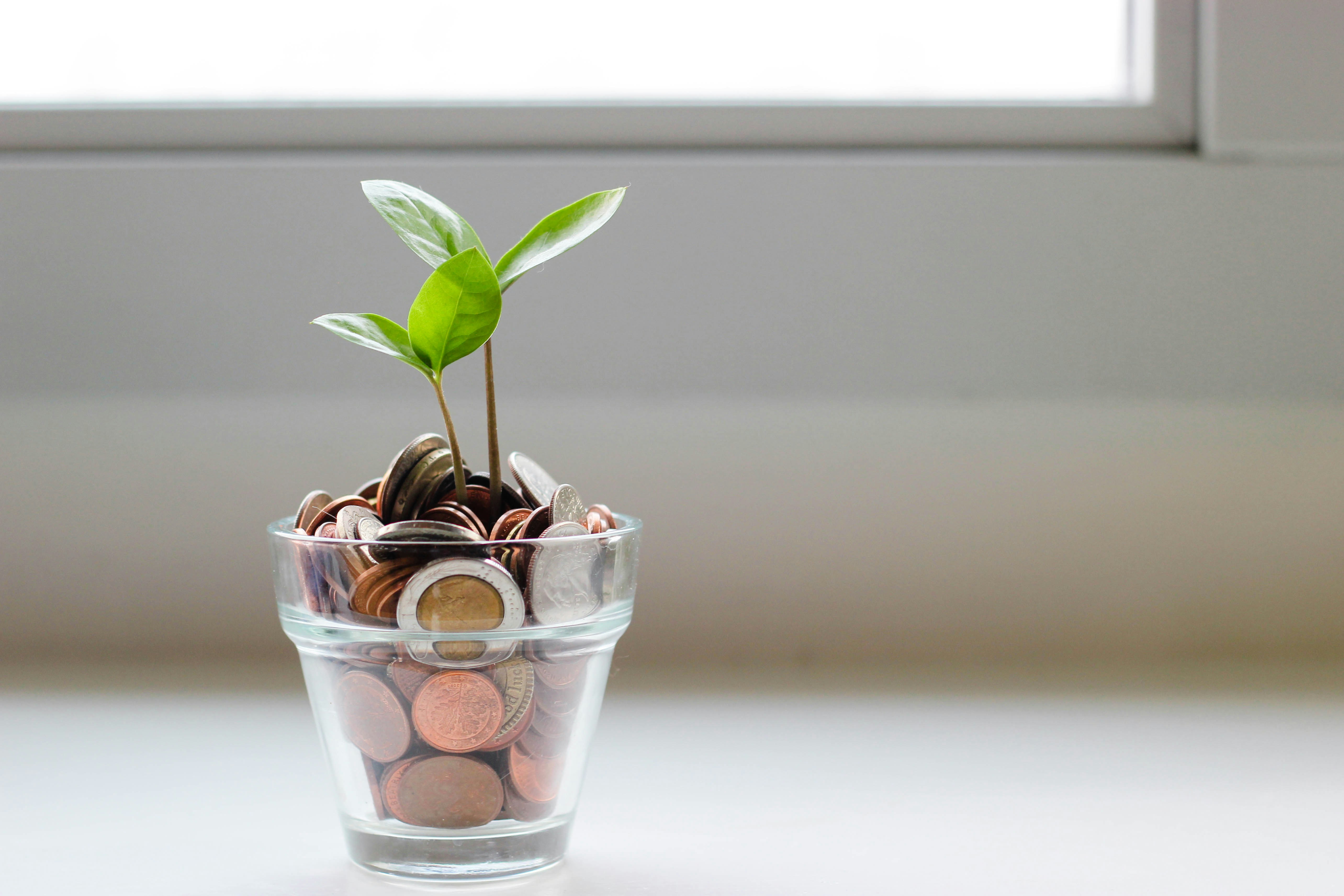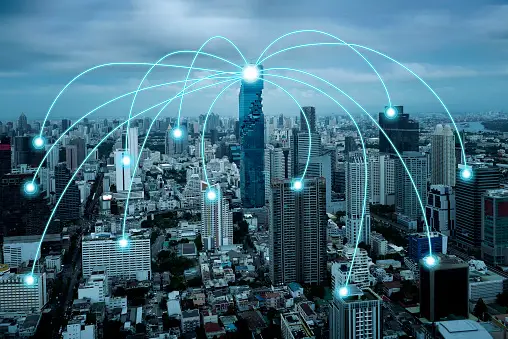Explore the transformative trends in retail with “The Shopping Revolution.” This insightful article examines the decline of physical stores, the rise of e-commerce, and the integration of technology in shopping, offering a glimpse into a future where online and offline experiences blend seamlessly for a sustainable, personalized consumer journey.
This retail environment may be characterized as revolutionary because the changes have disrupted the nature of buying and selling entities. Whispers rise about the death knell for the physical store – once the sole provider of the shopping experience. This article exploring some innovative changes that are down-sung the curtain on stores and giving birth to a new chapter of shopping experiences.
The Rise of E-commerce
Shopping has been made easier by e-commerce, which eliminates the geographic restrictions and the client conveniences are unprecedented. This means that the digital marketplace is ever active round the clock, thus meaning consumers shop at their conveniences without affecting store hours. This change has been catalyzed by technology, better network, and the increased usage of portable devices thus enhancing convenience in the buying of products online. By use of these electronic gadgets, it is very easy to compare prices, read other customers’ experiences as well as access other products hence the preference of online shopping to in-store shopping.
Here, the role of e-commerce cannot be overestimated as a factor affecting the consumers’ decision-making process. It means the classical model of consumer shopping which implies the certain sequence of steps starting from mere awareness can no longer be considered valid. This is because consumers today go through an online process; often these are initiated with a search, affected by social media, and culminating in the click and buy. This has resulted in the emergence of newer forms of retail strategies like the Direct-to-Consumer and Subscription service models. Mobile commerce businesses are also using data analytics to determine the needs and wants of the consumers and subsequently, improving on the factors that make e-commerce even more attractive.
However, the influence of e-commerce has several problems on this front. Another set of challenges includes cyber security threats, privacy violations, and the digital divide. However, there are concerns that with additional packaging and the delivery footprint, the carbon kitty is being affected. The above mentioned challenges are important to be solved for the sustainable development as e-commerce expands. As much as consumers are enjoying the convenience of shopping online, retailers need to find ways of developing environmentally sensitive packaging methods, and then there is a need to come up with efficient arrangements with third-party logistic firms with the major aim of minimizing on the amounts of emissions within their supply chain.
Here, the role of e-commerce cannot be overestimated as a factor affecting the consumers’ decision-making process. It means the classical model of consumer shopping which implies the certain sequence of steps starting from mere awareness can no longer be considered valid. This is because consumers today go through an online process; often these are initiated with a search, affected by social media, and culminating in the click and buy. This has resulted in the emergence of newer forms of retail strategies like the Direct-to-Consumer and Subscription service models. Mobile commerce businesses are also using data analytics to determine the needs and wants of the consumers and subsequently, improving on the factors that make e-commerce even more attractive.
However, the influence of e-commerce has several problems on this front. Another set of challenges includes cyber security threats, privacy violations, and the digital divide. However, there are concerns that with additional packaging and the delivery footprint, the carbon kitty is being affected. The above mentioned challenges are important to be solved for the sustainable development as e-commerce expands. As much as consumers are enjoying the convenience of shopping online, retailers need to find ways of developing environmentally sensitive packaging methods, and then there is a need to come up with efficient arrangements with third-party logistic firms with the major aim of minimizing on the amounts of emissions within their supply chain.
Technological Innovations
Technology is in the driver’s seat when it comes to shopping experiences and their creation and delivery. Modern technologies such as augmented reality (AR) and virtual reality (VR) are revolutionalizing the consumption experience. AR apps enable customers to place the products within their environment, thereby, reducing the level of risk involved and increasing level of satisfaction. On top of this, VR goes one step further because it basically creates virtual environments for consumers to even touch and use products, which was simply beyond the pale before.
Another revolution in the retail part is the use of Artificial Intelligence (AI). Chat Bots with the help of artificial intelligence offer customer support answers the inquiries, and suggests solutions at any time of the day. Artificial intelligence technologies processes enormous customer data for trend analysis and individualized marketing. Examples of such personalization were previously seen in exclusive retail stores, but with the help of AI, anyone can do it. The outcome is the improvement of the effectiveness of shopping while maintaining the interest of the consumer by addressing his individual needs.
Although there have been a lot of improvements in the implementation of new technologies, there are always some negative effects commonly attributed to the learning process when deploying new products. This means that retailers have to make the necessary investment in training and the creation of the necessary infrastructure so that he innovations can be put into effect. There is also a danger of isolation of certain customers as may be the case with customers who are not so inclined towards technology. For supermarkets and other similar establishments, suppliers have to be careful to incorporate these new tools in their operations while at the same time ensure that they remain friendly to all their clients. As innovation goes on the future trends among the proficient means that having technological superiority will be key in the retail markets future.
Another revolution in the retail part is the use of Artificial Intelligence (AI). Chat Bots with the help of artificial intelligence offer customer support answers the inquiries, and suggests solutions at any time of the day. Artificial intelligence technologies processes enormous customer data for trend analysis and individualized marketing. Examples of such personalization were previously seen in exclusive retail stores, but with the help of AI, anyone can do it. The outcome is the improvement of the effectiveness of shopping while maintaining the interest of the consumer by addressing his individual needs.
Although there have been a lot of improvements in the implementation of new technologies, there are always some negative effects commonly attributed to the learning process when deploying new products. This means that retailers have to make the necessary investment in training and the creation of the necessary infrastructure so that he innovations can be put into effect. There is also a danger of isolation of certain customers as may be the case with customers who are not so inclined towards technology. For supermarkets and other similar establishments, suppliers have to be careful to incorporate these new tools in their operations while at the same time ensure that they remain friendly to all their clients. As innovation goes on the future trends among the proficient means that having technological superiority will be key in the retail markets future.
The decline of physical stores.
The CN listed above show that conventional stores are decreasing, making this phenomenon evidence of the transformation in the retail industry. Yet, for the retailers, high streets and malls which were vibrant some time back are having people navigate less frequently, thus, resulting into shut down shops and companies debts. This is because, the opportunity and the versatility of Internet buying have put affairs conventional fixed shops out of business. To this, costs of rent, labor and maintenance are on the rise thus significantly diminishing the profitability of having physical stores.
The social element of shopping, which was a critical force behind most people visiting physical stores, is being introduced to social commerce. Services that pair well with social media like the usage of Instagram and Pinterest for e-shopping is ever on the rise whereby consumers can shop from the platforms. This shift is transforming the role of physical stores where they are now becoming more of experience stores and not so much of shop fronts. Retailers also are paying attention to the so-called ‘brick & mortar’ approaching that are hard if not impossible to deliver online like performances, courses, and other services.
Essentially, it can be summarized that the future of the physical stores is in their ability to provide the differentiation. Stores are trying out new ideas such as the Temporary Shops, Emotional Shops, and Social Spaces for consumers. The innovation application of technology such as smart mirrors and touch screens are improving the shopping experience. Physical stores are still going to exist but are only going to suffer if they cannot transform themselves and provide a unique experience to the online shopping experience.
The social element of shopping, which was a critical force behind most people visiting physical stores, is being introduced to social commerce. Services that pair well with social media like the usage of Instagram and Pinterest for e-shopping is ever on the rise whereby consumers can shop from the platforms. This shift is transforming the role of physical stores where they are now becoming more of experience stores and not so much of shop fronts. Retailers also are paying attention to the so-called ‘brick & mortar’ approaching that are hard if not impossible to deliver online like performances, courses, and other services.
Essentially, it can be summarized that the future of the physical stores is in their ability to provide the differentiation. Stores are trying out new ideas such as the Temporary Shops, Emotional Shops, and Social Spaces for consumers. The innovation application of technology such as smart mirrors and touch screens are improving the shopping experience. Physical stores are still going to exist but are only going to suffer if they cannot transform themselves and provide a unique experience to the online shopping experience.
Sustainability and Ethical Shopping
Including sustainable concerns and ethical buying behavior into consumers’ decision-making process is becoming more prevalent. Awareness that environmental problems and a search for justice exist has caused people to require goods that are beneficial for the individual, society, and the environment. Today’s consumers are paying attention to how brands source their raw materials and manufacture as well as distribute their products in the market.
Consumers are gradually waking up to this reality and are demanding that companies use recycled products, reduce on wastage, and provide fair labor practices to workers. Companies also trust and post information concerning the life cycle of products on the usage of the available brands. This aspect accrues credibility to the business among the buyers since they are assured of making the right decisions. Ahead, the circular economy is also picking up the pace and breaking through when it becomes possible to reuse and recycle products.
But, getting to the sustainable retail status is not easy. It means a radical shift in the patterns of thinking about the products and in the approaches to their creation, manufacturing, distribution, and use. Manufacturers and traders need to work with other parties such as governments and customers to fashion a better industry. It is a dilemma to ensure efficiency in the development of economy yet at the same time consider the impacts n the environment and society. With the increase in awareness among the consumers, sustainability will not longer act as a bonus but necessity for the retailers.
Consumers are gradually waking up to this reality and are demanding that companies use recycled products, reduce on wastage, and provide fair labor practices to workers. Companies also trust and post information concerning the life cycle of products on the usage of the available brands. This aspect accrues credibility to the business among the buyers since they are assured of making the right decisions. Ahead, the circular economy is also picking up the pace and breaking through when it becomes possible to reuse and recycle products.
But, getting to the sustainable retail status is not easy. It means a radical shift in the patterns of thinking about the products and in the approaches to their creation, manufacturing, distribution, and use. Manufacturers and traders need to work with other parties such as governments and customers to fashion a better industry. It is a dilemma to ensure efficiency in the development of economy yet at the same time consider the impacts n the environment and society. With the increase in awareness among the consumers, sustainability will not longer act as a bonus but necessity for the retailers.
The Omni Channel Approach
Omni Channel approach is post-modifying the shopping experience through combining the online and offline experience. They thanked this strategy makes it easier for the consumers to transition through digital and physical contact points without feeling like they are interacting with a different brand. In this way, a customer might search for a product on the Internet, examine it personally in a store, and buy it using an application on his or her portable device. The Omni channel strategy then builds on the operation of each channel and finds ways to improve the shopping experience.
To facilitate integration of channels, application development is being done by the retailers as in unified commerce platforms for synchronizing the inventories and customers data with those of multiple channels. This makes it possible to provide services such as pick up in-store or click and collect where a customer buys online and collects the merchandise physically at a store for pick up, or easy return policies where items bought online can be returned at a physical store. This approach also benefits retailers through gaining more information and knowledge of the consumers and thus helping them enhance their sales strategies.
However, the undertaking of an Omni channel strategy brings its fair share of problems with it. This calls for a lot of resources in terms of the hardware and software that needs to be put in place and new mindset that needs to be adopted. Thus, clarity and consistency in interfaces or simply making sure that the departments do not work in silos are key to avoiding giving Omni channel customers a fragmented experience. Another key factor is how to train personnel to handle multifaceted activities and how to maintain consistency of the brand’s message. However, it could also be inferred that the concept of Omni channel cannot be dispelled partly owing to the fact that the current generation of consumer demands it our right for retailers to embrace.
To facilitate integration of channels, application development is being done by the retailers as in unified commerce platforms for synchronizing the inventories and customers data with those of multiple channels. This makes it possible to provide services such as pick up in-store or click and collect where a customer buys online and collects the merchandise physically at a store for pick up, or easy return policies where items bought online can be returned at a physical store. This approach also benefits retailers through gaining more information and knowledge of the consumers and thus helping them enhance their sales strategies.
However, the undertaking of an Omni channel strategy brings its fair share of problems with it. This calls for a lot of resources in terms of the hardware and software that needs to be put in place and new mindset that needs to be adopted. Thus, clarity and consistency in interfaces or simply making sure that the departments do not work in silos are key to avoiding giving Omni channel customers a fragmented experience. Another key factor is how to train personnel to handle multifaceted activities and how to maintain consistency of the brand’s message. However, it could also be inferred that the concept of Omni channel cannot be dispelled partly owing to the fact that the current generation of consumer demands it our right for retailers to embrace.
The Future of Shopping
The evolution in the concept of shopping has pointed out to a progressive and unique approach of shopping in the future that encompasses innovation, categorization of customer preferences, and growth on environmentally friendly aspects. With the passage of time, new technology will emerge, and later online shopping will become more experiential with 3D views, virtual fitting rooms, and real-time advice. Providing will extend to hyper-personalization and personalization as Artificial Intelligence and big data will be widely used to offer customized solutions. Living in a sustainable manner will shift from being an obscure idea to a modern reality, which will define not only production and sales strategies for products, but also consumers’ actions.
Physical store retail will however continue to exist but they will be confined to a different role all-together. They will be used as brand narratives, places to engage with the target audience, and as persuasive communication environments. It shall present a strategic approach to expect the online and offline boundaries to disappear as consumers look forward to continuous transitions between the two. Businesses, particularly retailers who are willing to adopt these changes and present a value offerings that consumers will find of more value within the new paradigm of shopping will flourish.
Consequently, the shopping revolution is not at all the decline of stores, but rather a change of the very subject matter with which the matter of stores is concerned. It is a transition to a more connected, patient, and eco-conscious approach to shopping with an emphasis on sustainable practices. As we witness the evolution of retail, one thing is certain: the way we shop that body oil and from have will never be the same again.
Physical store retail will however continue to exist but they will be confined to a different role all-together. They will be used as brand narratives, places to engage with the target audience, and as persuasive communication environments. It shall present a strategic approach to expect the online and offline boundaries to disappear as consumers look forward to continuous transitions between the two. Businesses, particularly retailers who are willing to adopt these changes and present a value offerings that consumers will find of more value within the new paradigm of shopping will flourish.
Consequently, the shopping revolution is not at all the decline of stores, but rather a change of the very subject matter with which the matter of stores is concerned. It is a transition to a more connected, patient, and eco-conscious approach to shopping with an emphasis on sustainable practices. As we witness the evolution of retail, one thing is certain: the way we shop that body oil and from have will never be the same again.


























